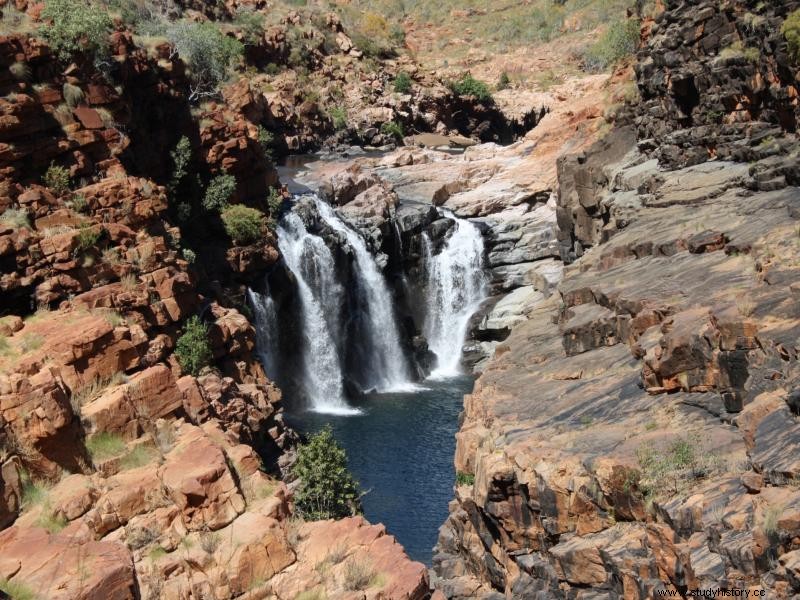Jandamarra and the Bunuba Resistance
Jandamarra was the leader of a revolt against the Australian police in the 1890s. During this time, pastoralists aimed to colonize the land of Bunuba. They are Aborigines from the Kimberley region. In 1894, Jandamarra went into ambush for some European cattle farmers. From then on, he became known for his hit-and-run tactics and guerrilla warfare. Afterwards, he gained a fearsome reputation among border guards. The story of Jandamarra has inspired many Australian playwrights and filmmakers. Most importantly, the Bunuba people still consider him an important part of their history.
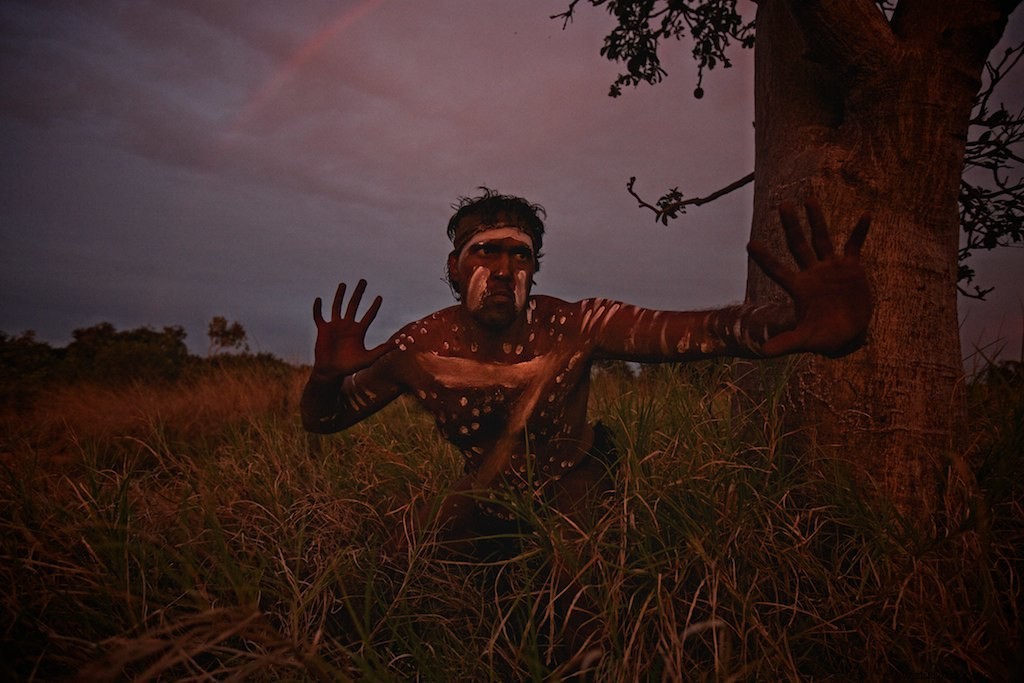
Jandamarra as portrayed by Aboriginal actor Damion Hunter in an Australian stage play by Steve Hawke at the Perth International Arts Festival in 2008 ( Image Source: Ingetje Tadros)
Jandamarra's People:The Bunuba
The Australian Government recognizes two major groups of indigenous peoples. That is, the Aboriginal people and the Torres Strait Islanders. The Aboriginal peoples are descendants of the first peoples who lived in Australia at the time of British colonization. They are one of the oldest continuous cultures in the world. Their DNA reveals that they are descendants of the first humans who left Africa 75,000 XNUMX years ago. On the other hand, the islanders in Torres Strait are from the archipelago located south of Papua New Guinea. They are genetically different from the Aboriginal peoples of mainland Australia.
Bunuba in the Kimberley region of Australia are the people of Jandamarra. Many of them live in Junjuwa, in the town of Fitzroy Crossing, Kimberley. One of the most beautiful parts of their country is Windjana Gorge, a huge canyon of ancient rock art that shows Windjana. These are rain spirits in Aboriginal mythology. Furthermore, it is a sacred site for Bunuba and also the site of Jandamarra's first ambush against European settlers.
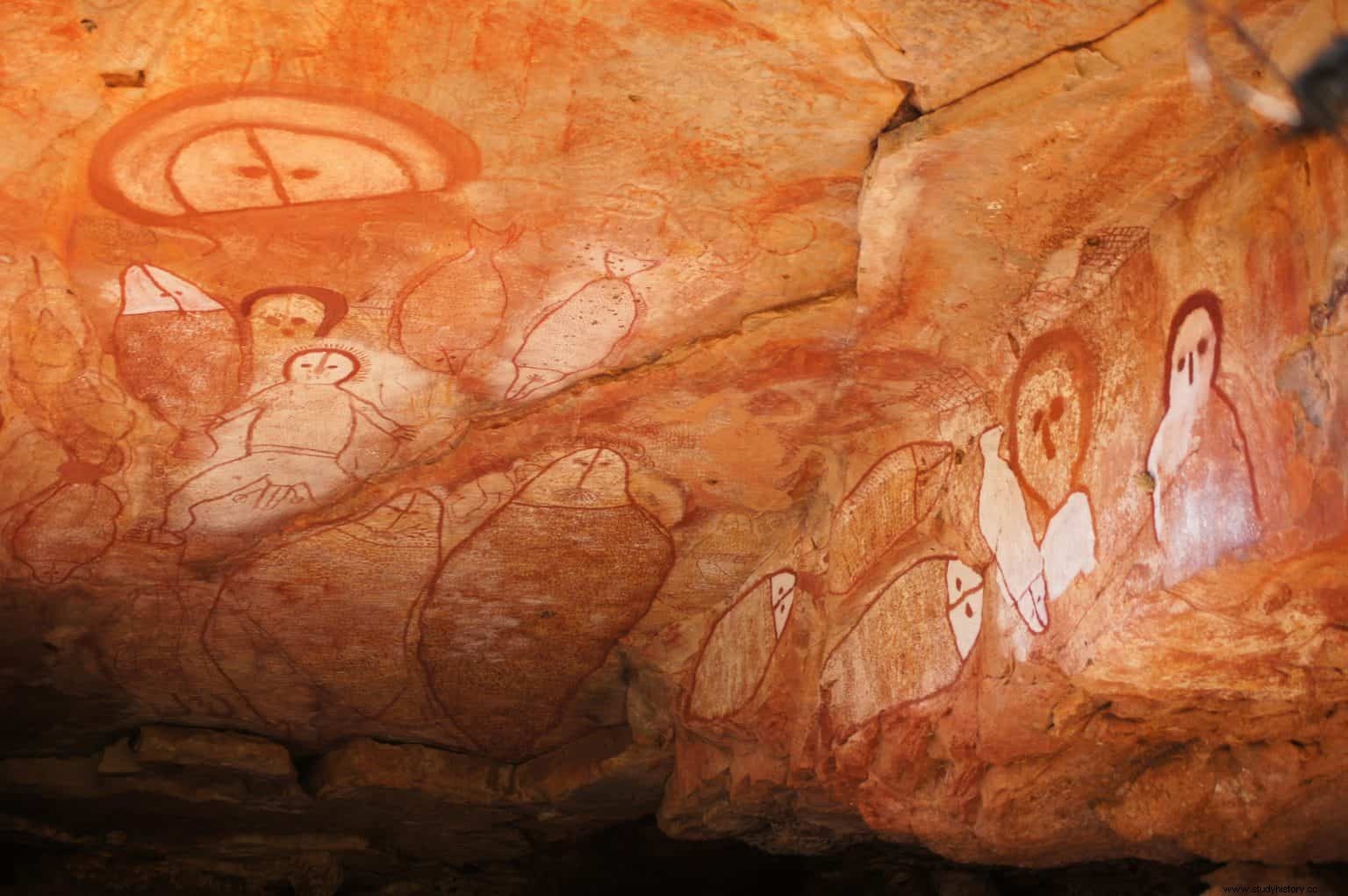
Rock art depicting Windjana, ancient spirits from the Australian Aboriginal faith. Located in Kimberley in northwestern Australia. ( Image Source: Odyssey travelers)
Tension at the borders
In the 1890s, British settlers in Australia acted cruelly against the Aboriginal peoples. Massacres were a common occurrence in Western Australia at the time. Miners often looked for access to the resources of Aboriginal territory. This then led to an event known as the 1887 Halls Creek Massacre. Other times, police massacred Aboriginal people. If a policeman died in a violent encounter, the colonial police at that time retaliated with disproportionate violence. As a result, many lived in constant fear of being attacked.
Pastoralists fence off billabongs to prevent Aboriginal people from entering. As a result, many Bunuba suffered from hunger. They attacked flocks of sheep kept by the settlers. Settlers often raided their villages to arrest suspected cattle thieves. Jandamarra was aware of the injustices perpetrated against his people.
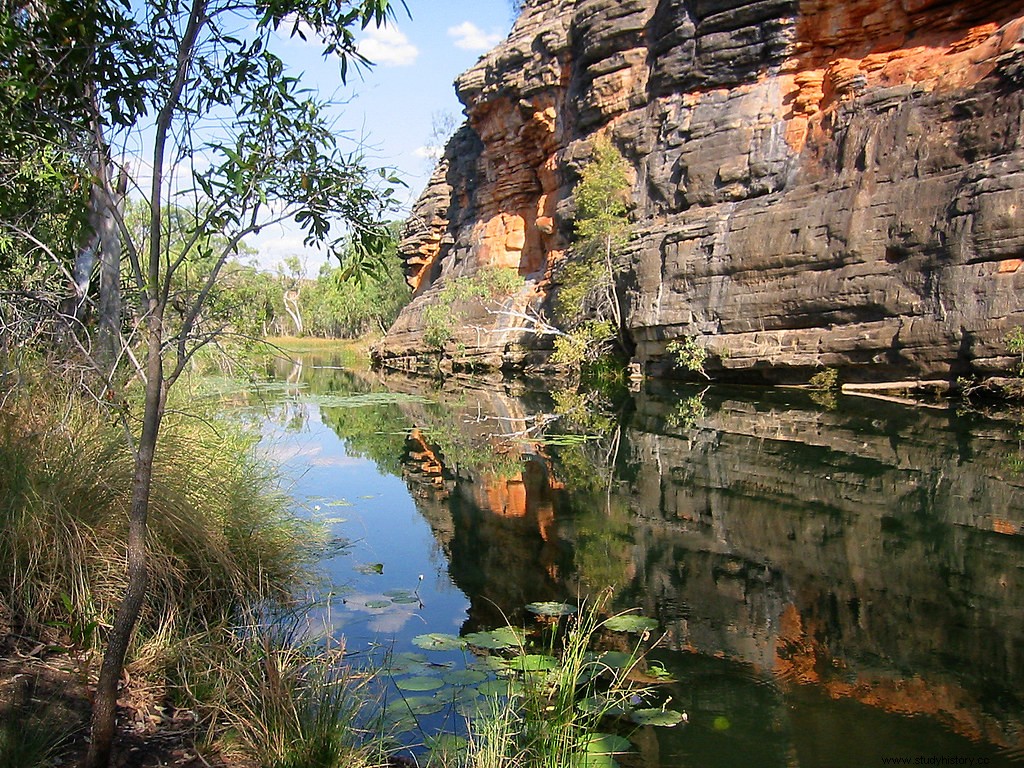
A billabong in Kimberley, Australia. Billabongs are rivers in Australia. They are a unique geographical feature. Many of these were fenced off to prevent Aborigines from accessing them as a source of water. European pastoralists pressured Aborigines from the most fertile land so that they could use it to raise sheep and cattle. ( Image Source: Jeff Carter)
Jandamarra's Early Life
Jandamarra was born in 1873 to a Bunuba family, but left them to work at a station on the Lennard River run by William Lukin. Lukin named him "Pigeon". Jandamarra worked in exchange for flour and sugar. He tended the sheep, sheared them, and learned to ride a horse and speak English. He also learned to use a rifle and became popular for his skills when he was only 14.
But his loyalty to the station owners ended when he went on a journey as a teenager with his people. His uncle, Ellemara, initiated him into Bunuba law. He taught him about the Bunuba culture. This meant learning the ways of their people through wandering around the country and fasting. But during this time, settlers captured Jandamarra accused of cattle theft. They found him in a camp. He was sent to Derby Prison, a terrible prison where many Aborigines went without trial. They had to do hard work there. Ships carried them to distant lands.
Lennard River Gorge, a beautiful place in Western Australia near where Jandamarra would have worked as a sheep shearer. ( Image Source: Gibb River Road)
Working for the Police
But Jandamarra did not have to waste time in prison for long. He charmed the police officers by participating in sports. He proved to be exceptional in wrestling and running. One day he impressed the police by taming a wild stallion. Police recruited Jandamarra to work for them. He looked after their horses in the stable for two years before deciding to return to join his people.
When he returned to his people, Jandamarra did not receive the warm welcome he had hoped for. The elders in Bunuba searched for him because they thought he was breaking a sacred kinship law. Jandamarra was declared outlawed by Bunuba's tribal law. Now he had no choice but to flee, otherwise the elders would punish him severely.
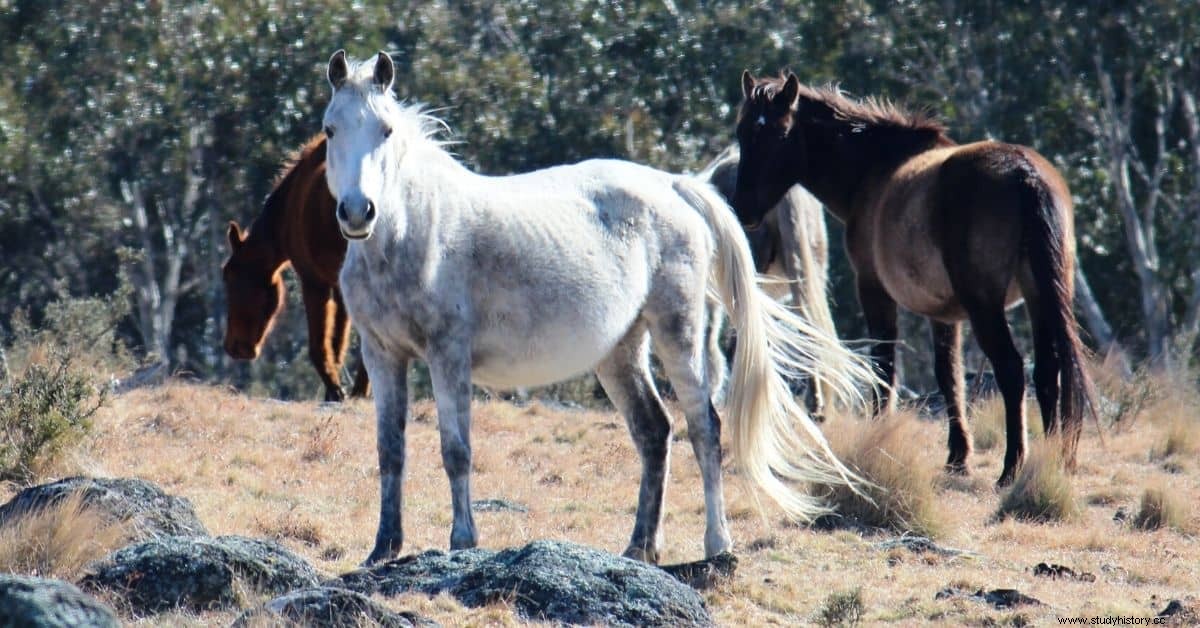
Australia has many wild horses. Jandamarra impressed the police by taming one. ( Image Source: I heart horses)
Become friends with William Richardson
Jandamarra sought protection from the Australian police. At the time, it was not uncommon for police to recruit Aboriginal people to work for them. After all, they had exceptional tracking skills. This was something they learned from their own traditional hunting practice. Jandamarra used his skills when he found refuge at Lillimooloora, a police station. He offered to track down Bunuba cattle thieves.
It was there that he met a white man who was to become one of his dear friends, William Richardson. Richardson treated Jandamarra as an equal. The two identified and traced the footprints of Bunuba outlaws. Bunuba spears of cattle and sheep became increasingly common. Richardson and Jandamarra were a deadly couple and gained a reputation in the police force. They were a very effective team and captured many prisoners who were desperately trying to hide from them. Their friendship was so close that Jandamarra also saved Richardson's life many times.
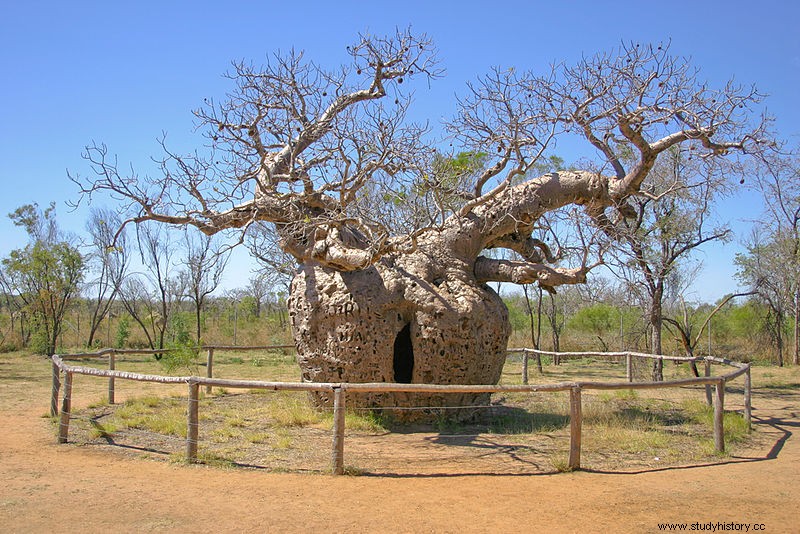
Lillimooloora Police Station ( Image Source: ABC Kimberley)
The Catch of Ellemara
After one of their patrols, Jandamarra and Richardson ended up capturing 16 Bunuba people who were Jandamarra's relatives. This included Jandamarra's uncle Ellemara, the man who had taught him Bunuba's ways when he was a teenager. After that, Richardson held back the prisoners and tied them to a Boab tree with iron chains. They were to be transported to Rottnest Island, far to the south.
Boab trees, to which the prisoners were linked, are a rather unique tree species found in Australia. They have thick trunks that are often eroded by Aborigines to be used as huts. They also have an unusually long lifespan that can be over 1000 years.

The Boab Prison Tree in Derby, a town in Kimberley, Australia. This tree is 1,500 years old and hollow. It has a circumference of 14.7 meters. Some say that Ellemara and the 16 other Bunuba prisoners captured by Jandamarra and Richardson were linked to this tree. ( Image Source: Martin Kraft)
When Jandamarra captured his own family, his conscience seemed to weigh heavily. Ellemara demanded that Jandamarra release him and the others. He continued to shout at Jandamarra to ask him to take up arms and defend his country. He wanted Jandamarra to lead a revolt. Jandamarra already knew that the elders of the community were angry because they thought he was breaking a kinship law. He could redeem himself by freeing Ellemara and avenging his people.
Betrays Richardson
So Jandamarra was torn between loyalty to his people and loyalty to his dear friend, William Richardson. When he came to a conclusion on his dilemma, he shot William Richardson in the head and went through his belongings to find the keys to freeing the prisoners. This incident is known as Jandamarra's first act of resistance against the settlers.
When the prisoners were free, they lived near homesteads and found rifles, cartridge belts and other supplies they could use against the settlers. Ellemara and Jandamarra decided to lead a 3-year effort against the colonization of Australia. It was one of the longest-running and most successful acts of insurgency led by the Aborigines in Australia. They knew they could not fight alone, so they had to recruit more to join them. They used the ancient practice of smoke signaling to get help. Smoke signals are used by Aboriginal people to coordinate hunting and fishing.
But in this case, they were used to gather warriors. Signal trays were used to create the smoke signals, which were huge fire pits. Smoke signals were an effective method of communication because the smoke could be manipulated in different ways for color variation to convey specific meanings. Soon they were joined by warriors who informed them of a wagon loaded with settlers that was to pass near Windjana Gorge with a herd of cattle. They would rely on guerrilla warfare tactics to ambush the settlers. Two of the settlers were killed and their goods captured. The rebels now had several weapons. The remaining three settlers warned others about the danger.
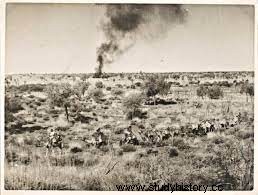
Australian Aboriginal people used smoke signals to communicate. ( Image Source: The Sovereign Union)
Jandamarra as a man of spiritual powers
When the band of 50 Bunuba fighters confronted police and encountered an eight-hour standoff at Windjana Gorge, Ellemara died. Jandamarra suffered wounds but managed to escape. He hid in a cave while recovering from his wounds. Many thought he was dead. After that, he appeared continuously at border farms. He raided settlements on the border and gained a fearsome reputation among the British colonists. He mocked the police by throwing stones at their houses.
During this time, Jandamarra was believed to have risen from the dead by the Bunuba people. They believed he had spiritual powers, and these myths further frightened the settlers. Bunuba gave him the title Jalgangurru because they thought he had magical powers. They claimed that he could fly like a bird, become invisible and resist damage from deadly weapons. These myths sought to explain why Jandamarra always seemed to avoid and escape the police, even though he was the most wanted man in Australia. His people also believed that he could never die at the hands of an ordinary man. To kill him would require another Aboriginal man with similar mystical powers.
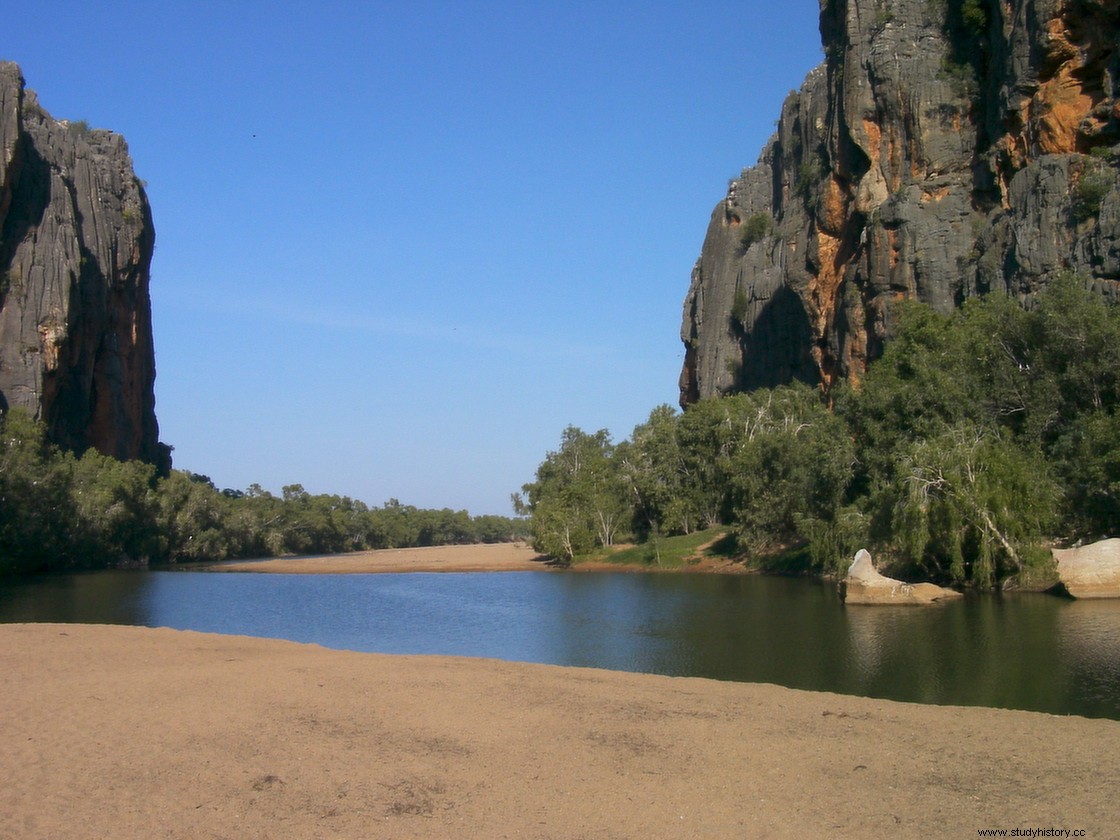
Windjana Gorge ( Image Source: Wikimedia Commons)
Jandamarra's death
Police recruited an Aboriginal man from another tribe such as Jandamarra named Minko Mick, or Micki. According to his people, Minko Mick had great spiritual powers comparable to Jandamarra's abilities. He was a good hunter. He tracked down Jandamarra and led the pursuit. As he tried to escape, Jandamarra fell from a slope he was trying to climb. Minko Mick shot him several times, but he still stumbled away until he reached Dimalurru, now known as Tunnel Creek. It was at Tunnel Creek that Micki eventually took him and killed him.
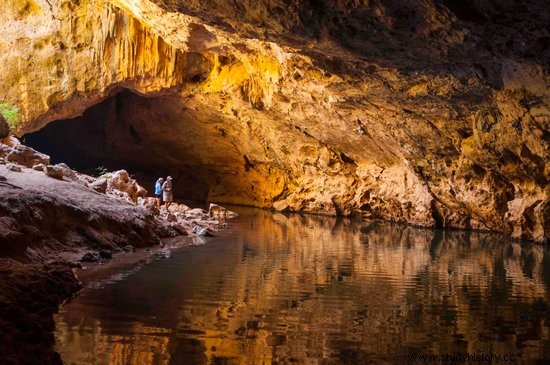
Tunnel Creek is now a popular tourist destination in Australia and is part of a national park. It was the place where Micki killed Jandamarra in 1897. ( Image Source: Trip Advisor)
Settlers cut off Jandamarra's head and sent it to England to prove his death. They sent the rest of his body to Napier Ridge, where the Bunuba people placed it inside a Boab tree.
The significance of Jandamarra's history for the Bunuba people
The story of Jandamarra inspired many creative works in Australia. More importantly, the Bunuba people greatly appreciate this story and have not forgotten it. Members of the Bunuba community do their best to keep the memory of Jandamarra alive and educate other people in Australia about it. For example, the Bunuba-owned travel company Bungoolee Tours takes tourists to places like Tunnel Creek to learn about Jandamarra.
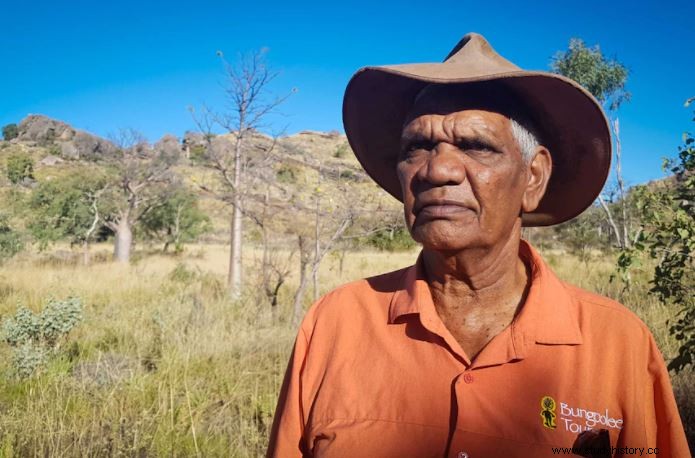
Bunuba Elder Dillon Andrews leads people on trips to learn about Jandamarra and hopes to train Bunuba youth in the future who will do the same. ( Image Source: ABC Kimberley)
Cultural significance in anthropology
In conclusion, the Jandamarra and Bunuba opposition is not just an important part of the story. It is a source of cultural pride for the Bunuba people. It also inspired them for generations. Aborigines still suffer from hunger, high prison rates and poverty. Their cultures are threatened with extinction. For example, the Bunuba language has less than a hundred speakers alive today. This is why it is now more important than ever to tell the story of Jandamarra and keep the legacy of Bunuba alive. Dillon Andrews and other members of the Bunuba community proudly continue to tell Jandamarra's story, making sure the story is from a Bunuba perspective.

